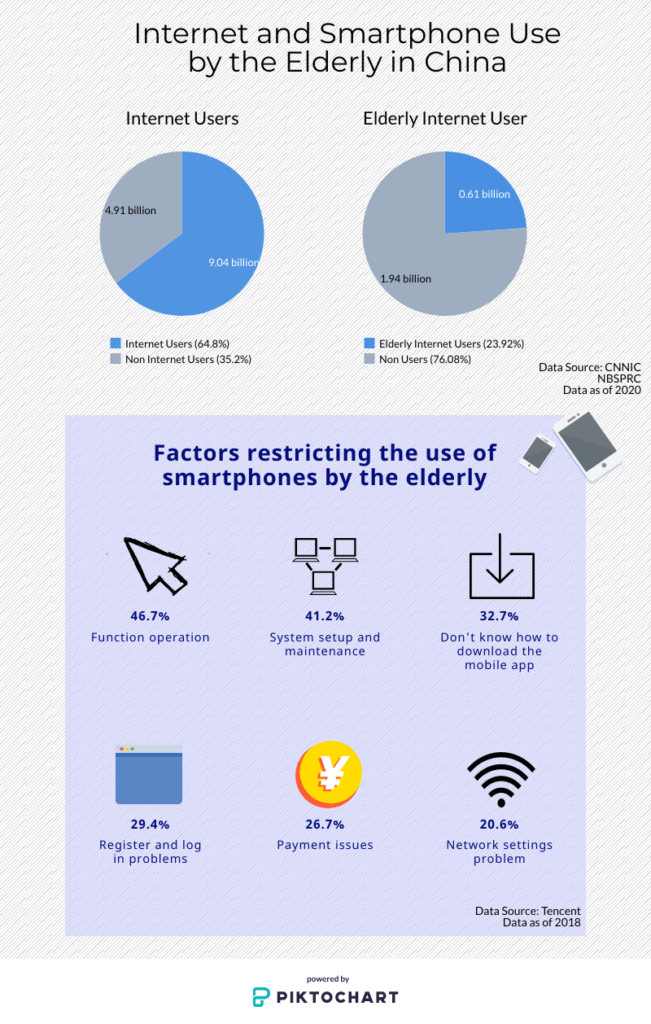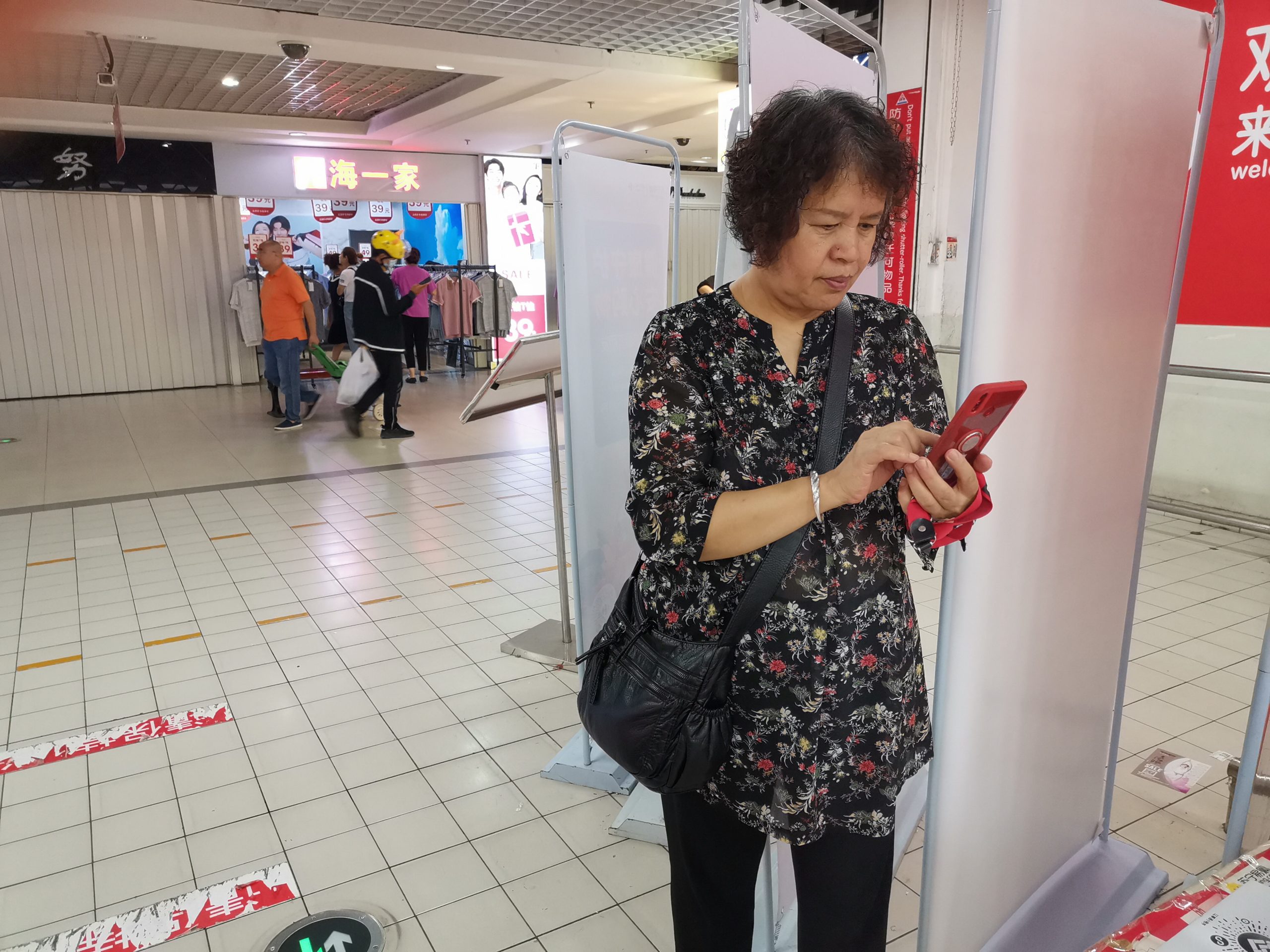According to news reports, during the Covid-19 pandemic, an elderly person was refused to take public transportation because he could not operate the “health QR code” in the smartphone. What difficulties are faced by the elderly who are called “digital refugees”?
Yuqiu Zhu, a 72-year-old retired teacher, went to the hospital alone, and she was nervously waiting for her test results. After a while, Yuqiu was told to check the report on the self-service machine. She stood in front of the machine, but had no idea about how to operate it. She looked at the people waiting in line behind her, sweating anxiously.
Yuqiu lives with her husband in Shenyang, one of the most developed cities in northeast China. Based on factors such as commerce and transportation, Shenyang has been selected by China Business Network as a new first-tier city for seven consecutive years. In China, people like Yuqiu are called the empty-nest elderly by scholars, referring to the elderly whose children go out to work and leave them ling alone. As a retired teacher, Yuqiu has engaged in education for decades, but now she laughs at herself as a “fresher” in using digital devices.
Yuqiu’s challenge started from the moment she entered the hospital. She queued up to make a doctor appointment and ranked the third. After the doctor went to work at 8 am, Yuqiu realised that she was jumped in line by several patients who made appointments online. So she had to wait until noon to see the doctor. In order to save time, the hospital requires patients to check the test results on self-service machines or their smart phones. Yuqiu knew nothing about these two methods, and there is no staff around to help. She endured the pain and was sitting in a chair, feeling lost.
“Technology is developing so fast that our elderly people cannot keep up. My child is away from home to work, and he cannot give me timely guidance. Sometimes I could only shrink back in the face of high-technology,” says Yuqiu.
“Digital Refugees”
Outdated in the digital age is a common problem faced by the elderly in China. According to the government data, China’s population over 60 years old has reached 250 million, among whom only 23% use the Internet. According to a survey conducted by the Chinese Academy of Social Sciences and Tencent Center for Internet&Society, the Internet use of the elderly is mainly reflected in communication and information acquisition. They usually use Wechat to communicate with family and friends, and browse news online. Wechat is a messaging, social media and mobile payment app developed by Tencent company, which has more than 10 billion active users. However, in terms of daily life services, such as online shopping, online payment of utility bills, use of car-hailing apps or doctor appointments, the usage of elderly people is relatively low.
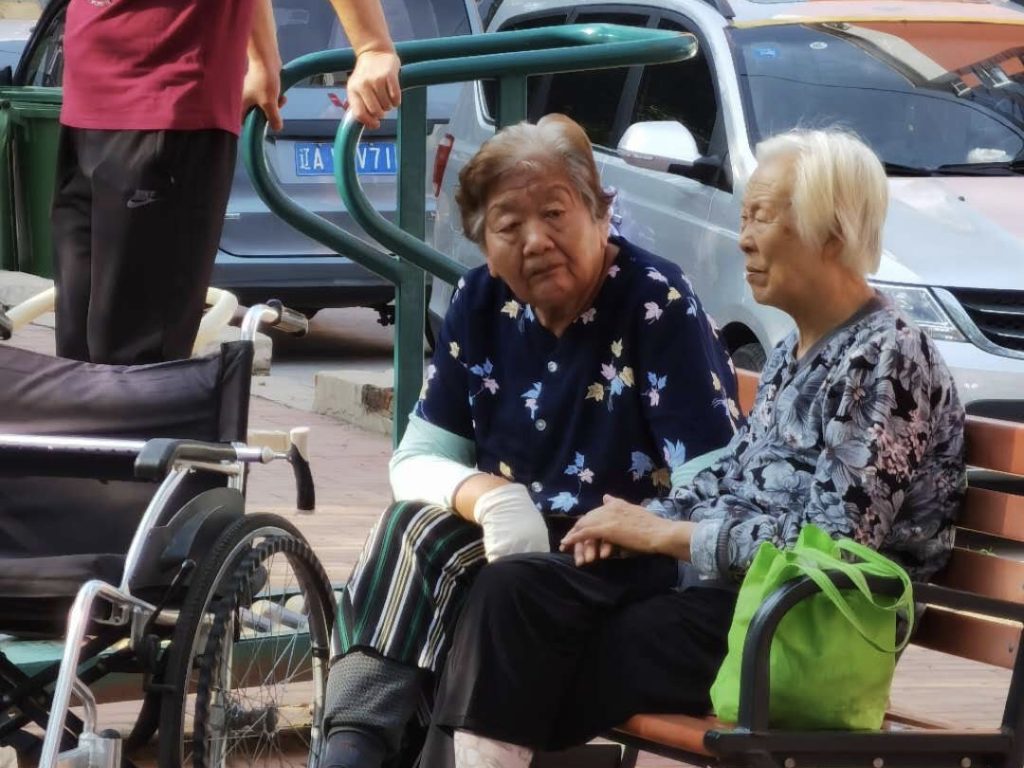
This is a reflection of the digital divide in terms of generations. The digital divide refers to the uneven distribution of access, use or impact on information and communication technologies between different groups.
The word “digital refugees” was first proposed by Dr. Wesley Fryer in 2006. It refers to older adults in the society who have chosen to stay away from or resist the digital culture.
After retirement, the elderly have changed a lot in terms of the pace of life, social status, and interpersonal communication. The emotional depression and anxiety could be caused by the inability to adapt to the sudden changes. The digital divide could increase the anxiety and depression of the elderly.
Dr. Susu Liu is a sociology professor of Soochow University. She mainly studies social gerontology and social work for the elderly.
“Elderly people’s incompatibility with digitization could increase the anxiety level of them, and they would further reduce their contact with digital life in order to avoid the increase of anxiety, which worsens the incompatibility,” says Dr. Susu Liu.
In addition to the medical aspect mentioned above, “digital refugees” are also facing challenges brought about by technology in daily life.
The most prominent aspect is to take transportation. Since 2015, car-hailing apps have become popular in China. After acquiring its main competitor Uber China in 2016, Didi Chuxing is undoubtedly the most popular car-hailing app in China. According to the survey report on travel habits of the elderly released by Didi Chuxing in 2016, only 16.23% of the elderly would choose to use car-hailing apps when they encounter travel difficulties.
On a public holiday, Yuqiu and many other people were waiting for the taxi on the roadside. She watched the people around her gradually get on the taxi by using car-hailing apps and she waited for more than an hour before getting on a taxi that was not reserved online.
“In the past, the taxi would have stopped if I waved my hand, but now the taxis are booked online by young people,” says Yuqiu.
The Health QR Code System
During the Covid-19 pandemic, the inconvenience caused by the digital divide is more serious. In order to control the spread of the virus, China has implemented a health QR code system. China Newsweek, an official current affairs news publication, called the code “a fast-growing product” of the coronavirus pandemic. This system was first implemented in Hangzhou in February and later rapidly developed throughout China, becoming a necessary electronic pass.
According to the announcement of the Hangzhou government, people who are not at risk of Covid-19 are given green codes. These codes allow them to travel freely, while those with yellow codes and red codes need to be quarantined for seven days and fourteen days respectively. This system tracks individuals’ contact history, travel history and physical condition directly through their smart phones.
It is undeniable that this is an effective way to control the spread of the virus, but this made it difficult for “digital refugees” to travel on public transportation.
In the early days of implementing this system, the media reported many times that older adults were denied free movement because of their lack of the health QR code. According to Pear Video, an information video platform, on March 20, an elderly man was refused to take a bus in Zhenjiang, Jiangsu Province. The driver explained that the bus company stipulated that people without a health QR code cannot take the bus. Later, local governments and communities have implemented several alternative methods. For example, the elderly’s health code can be applied for and printed by family members. Thus the elderly can register personal information instead of the health QR code when taking public transplantation. However, until August, similar incidents about elderly people being refused to take bus still appeared in news reports.
QR code payment is also an area where some elderly people cannot adapt. According to a report on Internet use by middle-aged and elderly people in China, nearly half of them have never used mobile payment.
Due to the simple and convenient operation, this payment method has become popular in recent years and it has a tendency to gradually replace cash and card payments. According to the mobile payment user research report, QR code payment has been accepted by 89.1% of users and is widely used in retail, catering, public transportation industries. There are two operation methods. One is that the customer scans the QR code of the retailer and enters the amount to pay, which is mainly used for small shops. The other is to place the payment code on the scanner and the money would automatically be deducted. This is mainly used for large or chain stores. But these simple steps are tedious for the elderly with poor acceptance ability.
For the safety during Covid-19, some retailers only accept the QR code payment. The 63-year-old Xiumei Liu was once rejected to pay by cash at the grocery store. After Xiumei didn’t buy anything and went home, her son offered to help her open the QR code payment function. Despite the longing for digital culture, Xiumei rejected her son’s suggestion because it would not bring convenience to her.
“I have presbyopia, if I use a smartphone to pay, I would carefully check if the number is entered correctly, which is too time-consuming and I also worried I would encounter troubles due to false touch.” says Xiumei.
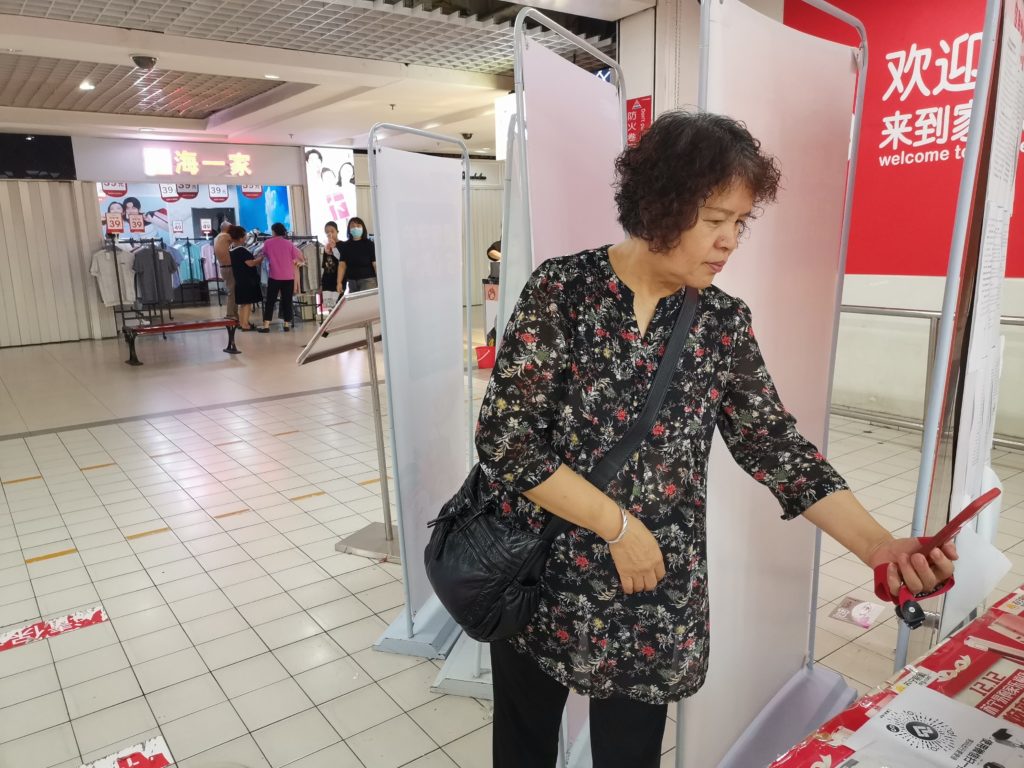
In addition, there are criminals who use the weaknesses of the elderly to scam online. According to the survey report on the Internet status and risk networks of middle-aged and elderly people, up to 37.4% of elderly netizens have encountered online fraud. Thus the elderly have worries and fears about the digital functions related to money.
Lack of assistance
The biggest difficulty in integrating in the digital culture is that there are few channels to give them effective guidance. These can be divided into two types, one comes from family and friends, the other comes from the society. However, these two channels provide insufficient assistance to the elderly.
As the social interaction and work activities of the elderly gradually decrease, their core relationships are more focused on their families.
Shuzhi Zhang is 75 years old and she was a historical researcher before retirement. Among her peers, she has a high level of education. When she just retired, she thought that her knowledge level was sufficient for her future life. But now, her use of the smartphoneis limited to making phone calls and using WeChat to communicate and she is far from satisfaction.
She said: “In the past, we needed a textbook to learn a skill. The functions of the smartphone are abstract, and without the guidance from textbooks, I can not and dare not to use many of them. Young people seem to be able to use all the functions on their phones. I don’t know how they learned to use them, and where they learned from.”
Shuzhi explained that sometimes she had to ask the young people around her, but she learned slowly and needed to take them a long time. The young people were always busy with their work, and she was too embarrassed to bother them.
The lack of digital training for the elderly in society is another reason. “Although I have poor learning and acceptance skills, I also want to learn how to use the smartphoneand the computer. I have heard that there are colleges for senior citizens providing trainings in this area, but I don’t know where they are or how to join in the courses. If there are more channels in the society, I would be very willing to participate.” Says Shuzhi.
Dr. Susu Liu believes that the engagement of the digitalisation of the elderly requires assistance from many parties.
“In the digital age, only under the influence and help of various parties, such as family, friends, and the community, can the elderly accept new ideas and reasonable digital penetration, and maintain a basic digital life. In this way, their happiness can be maintained,” says she.
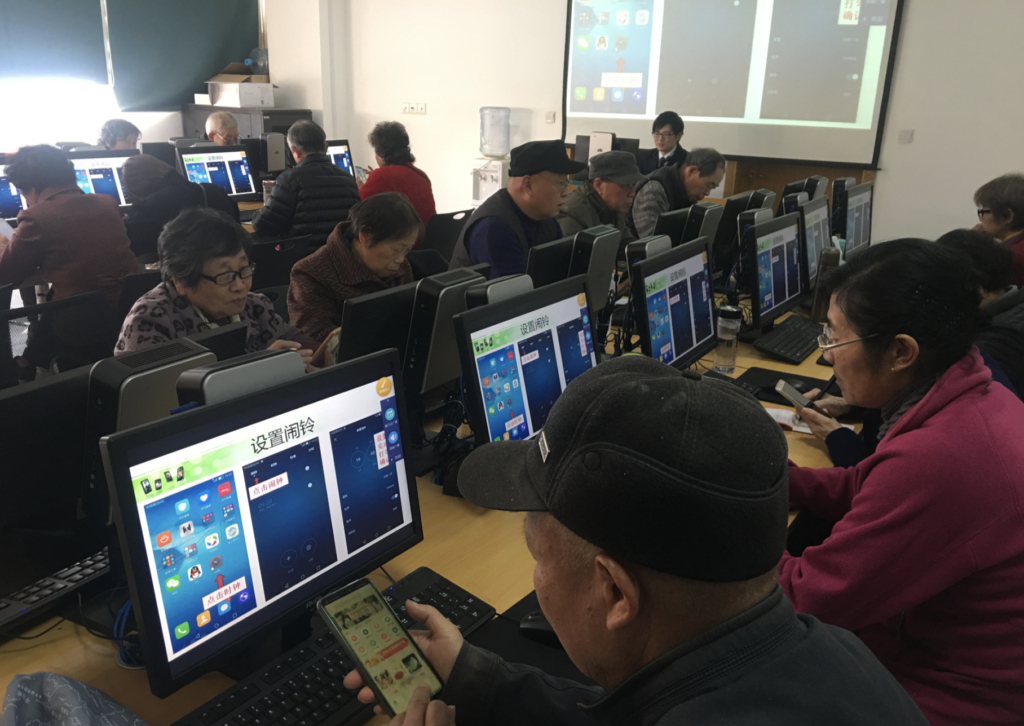
The digital divide of the elderly has attracted attention in society. In the National People’s Congress of China, the NPC deputy and famous film director Jia Zhangke put forward a proposal called “Help the elderly enjoy the digital life”. Another NPC deputy Liu Hongyu came up with “A proposal on improving the quality of life of the elderly in the digital era”.
Their suggestions can be divided into three points. Firstly, service industries such as banks and hospitals should retain traditional customer service and call on volunteers to provide guidance to the elderly. According to Jia Zhangke’s opinion, taxi should not only be booked online, but also be reserved on the telephone. Banks should have one or two service counters that can help the elderly who are not suitable for automated service.
Secondly, the society should provide targeted training for the elderly to help them to enrich their spiritual lives. Especially the grassroots communities should take their responsibilities to actively promote the digital engagement of the elderly. For example, carry out training, and set up volunteers to use the telephone or face-to-face form to guide the elderly.
“It is a good way for the elderly to have a more intuitively personal experience of digital culture, that is, to enhance the exposure of digitalisation among them,” says Dr. Susu Liu.
Furthermore, product designers should also promote digital devices that meet the operating habits of the elderly. As the age increases, the body’s functions are degraded, especially memory, flexibility and proficiency of the fingers would have degenerative characteristics. These can cause problems such as visual impairment, dyslexia and cognitive impairment. The core of the countermeasure is accessibility. “Making full use of various functions to complement each other is worth studying. If it is not easy to optimize visually, improve the auditory functions, such as the voice assistant on smart phone.” says KaKi Lou, a user experience designer. In terms of the interface of digital devices, she believes the design should enlarge the target elements and use strong contrast and other guiding label instructions to assist.
After all, the best solution is to observe and record the needs of the elderly in a down-to-earth manner. “The greatest value of design is to enable the elderly to feel that they are not the group that has been forgotten,” says Kaki Lou.
Yuqiu still didn’t learn to make an doctor appointment online and she was accompanied by her son to the hospital for a follow-up check. She called on society to keep some time and space for the elderly to adapt to the rapid development of digitalisation.
